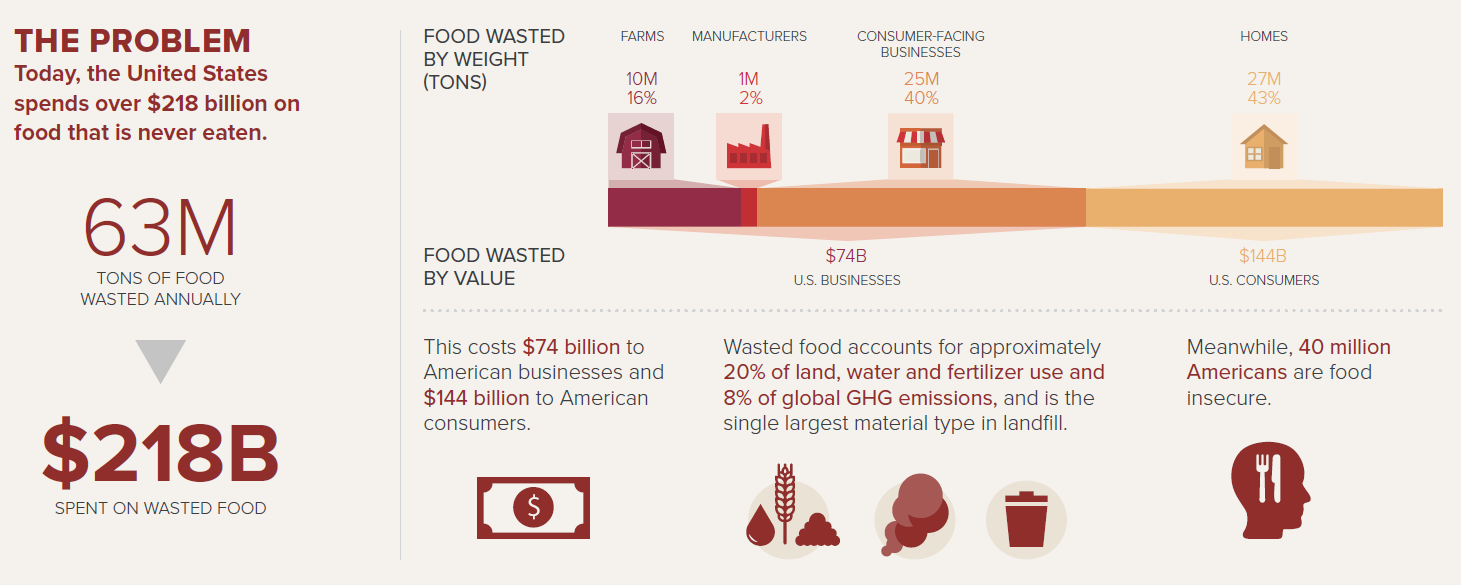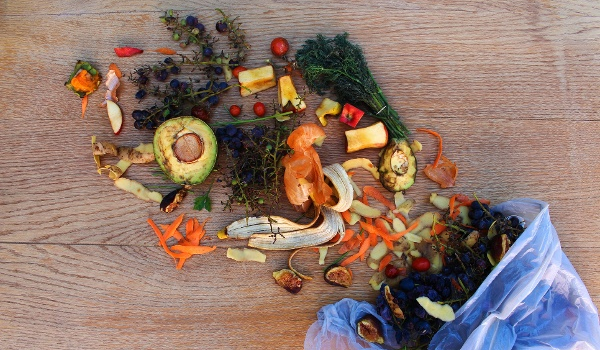The rise of the “ugly produce” movement combines the ecotarian duty of saving the planet through food choices with the convenience of grocery delivery services. It’s a clear win-win, right? Well, that depends who you ask.
In 2018 alone, food-waste startups were estimated to have raised $125 million in investments, and they don’t seem to be going away anytime soon. While some have responded by singing their praises, others are not so convinced of the ecological validity. Regardless of your stance on the ethical merits of the trend, it brings to light a much larger, overarching problem: the prevalence of food waste.
A rather illuminating statistic published by the Washington Post states, “Less than 20 percent of total food waste happens at farms and packinghouses, where the ugly-produce movement works its magic, according to ReFED, a nonprofit dedicated to researching food waste policies. The vast majority of waste — more than 80 percent — is generated by homes and consumer-facing businesses like grocery stores and restaurants.”

According to the ReFED report 2018 Annual Report, the leading cause of food waste is that which is tossed inside the home. Consumers are advocating for increased consumption of “imperfect” produce items when they ought to be advocating for more widespread consumption—meaning more responsibility is on them than they might like to admit.
Basically, consumers are looking at companies like Imperfect Produce to help solve the food waste problem when they ought to be looking in their own waste bins. Ugly produce companies may help to a certain degree, but even if all food waste from the farm were eliminated, that would only solve a fraction of the problem. Produce brands that continue to sell to major retailers ought not to fear the rise of ugly produce companies: both are working to increase produce consumption. Rather, they would be wise to utilize the buzz to start conversations about smarter consumption. At the end of the day, whether a strawberry went in the fridge looking like a Victoria’s Secret model or more like Gandalf from The Hobbit, if it ends up in the trash, it is food waste.
How Your Brand Can Enter the Food Waste Conversation:
1. Tell your ugly secrets.
The best thing a produce brand can do is educate consumers about what really happens to the produce that doesn’t make it on the front row of store shelves, and that it is not just being tossed in the trash. Second-grade produce goes to foodservice, lower-end grocery stores, or even ends up snuck into jams, sauces, baked goods, etc—but what percentage of your audience understands this? Another major outlet for ugly produce is food banks. In fact, this article points out that the 2.6 billion pounds of lower-grade produce was being donated by farms and retailers to charities like Feeding America in 2016. This number was reduced to 1.4 billion pounds in 2018—a significant decrease that, while we cannot directly attribute to the rise of the ugly produce movement, certainly happens in its wake. The reality is, ugly produce was going places other than the trash even before the focus on ugly produce.
2. Food storage- you’re doing it wrong.
An easy win for reducing food waste comes from increasing awareness of correct food storage protocols. For example, washing berries right away or storing produce that needs to breathe in airtight containers are common mistakes that shorten the life of fruits and vegetables. Moisture is largely food’s biggest enemy, so to prevent unnecessary waste, try providing tips like wrapping greens in a tea towel or letting leftovers cool completely before packing up in storage containers to reduce condensation.
3. If you fail to plan, you plan to fail (Thanks, Benjamin Franklin)
Encourage people to plan out their menu for the week according to their schedule. This is helpful because a large contributor to food waste is actions like buying a week’s worth of groceries without considering that there is a soccer game Monday night, ballet rehearsal Tuesday, a PTA meeting Wednesday…etc. Planning out a menu also ensures that consumers have what they need when they are ready to cook, rather than making multiple trips to the store and inevitably buying that (well-intentioned) extra bag of arugula that will end up looking like moss by the time it comes out of the refrigerator a few weeks later.
4. Offer root-to-stem recipes.
Root-to-stem cooking is a popular culinary movement that encourages using every part of the vegetable or fruit, thereby reducing waste. Offer creative ideas like Carrot Top Pesto, Pickled Broccoli Stems (hello, healthy gut!), or even making a vegetable stock with odds and ends; all of these can help people enjoy every bit of their fresh produce.
5. Encourage waste consciousness.
Addressing a problem always begins with awareness. Encourage your audience to take note of food they throw away each week, to observe frequently wasted foods, and tweak shopping lists in the future. This can help to ensure a smarter shopping plan and allow someone else to enjoy that bag of arugula (sorry, it’s just an easy one to pick on).
How do you reduce food waste? Leave us a comment below or reach out to us on Twitter @TheCoreBlog!
{{cta(‘fbc3d34f-cf67-49f8-9826-6a9a4c06733c’)}}












